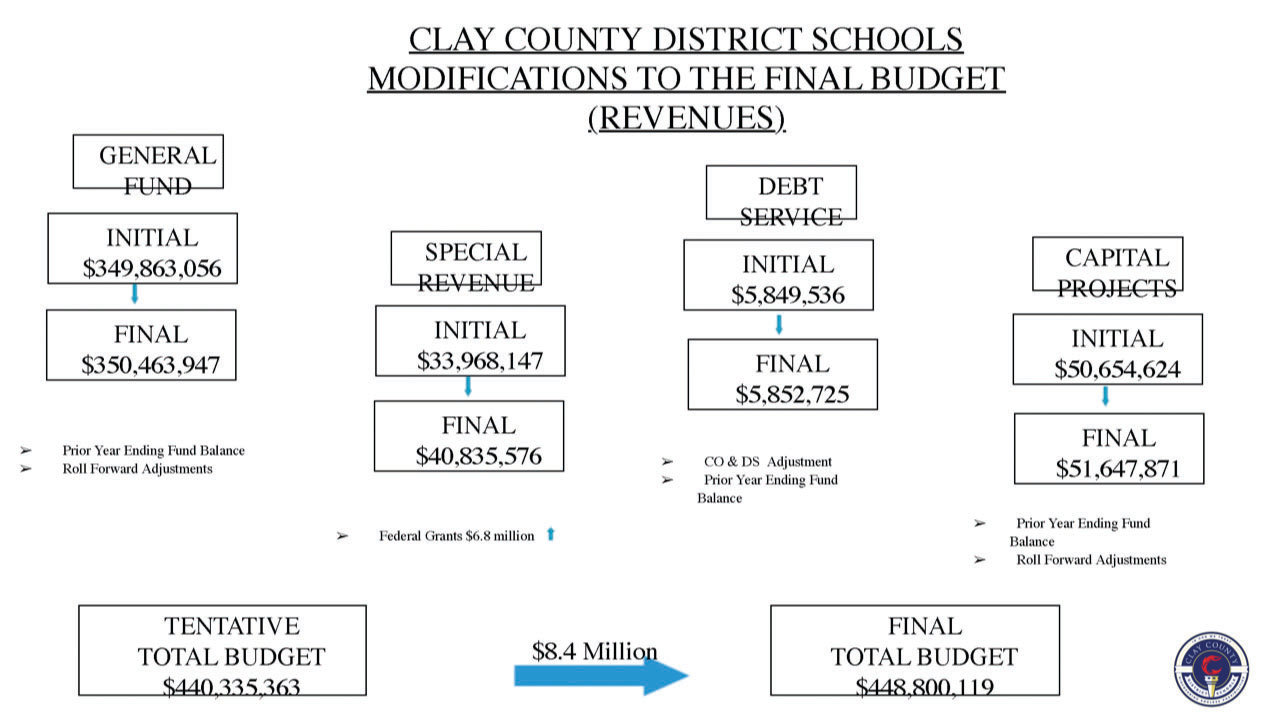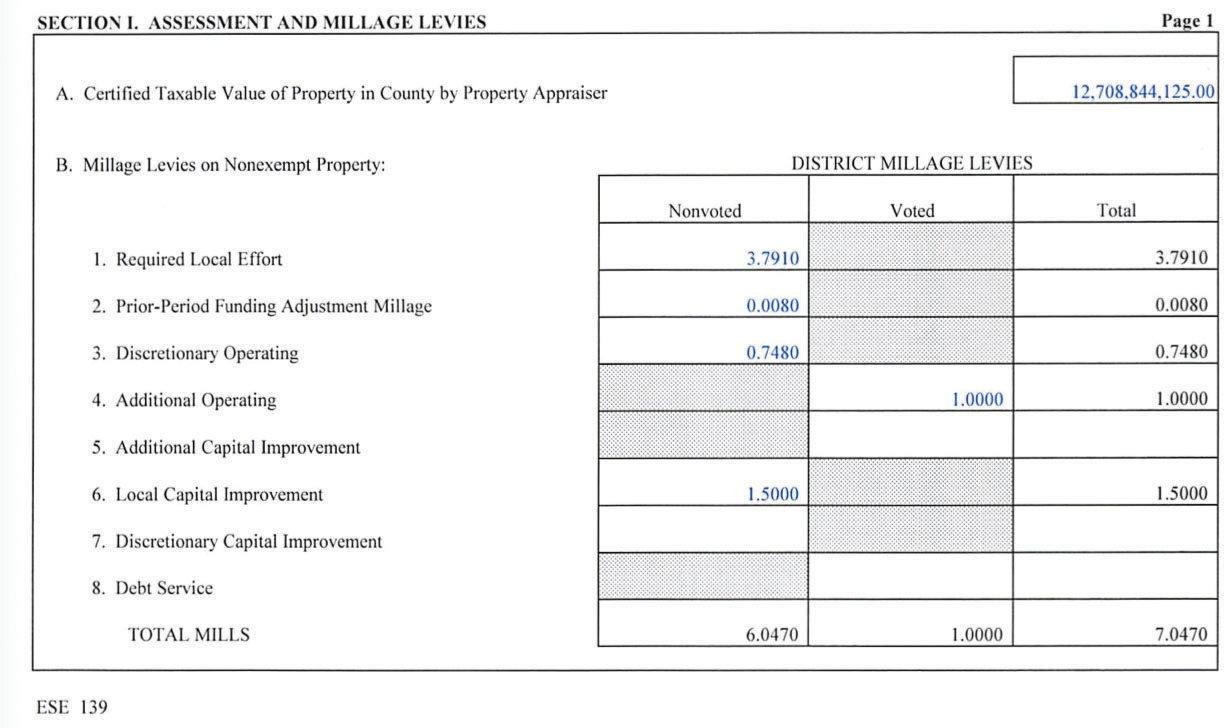Clay County School Board sets its budget at $450 million
GREEN COVE SPRINGS – The school board’s final budget for 2019-20 was approved last week at nearly $450 million.
Between the one mill increase voted through by voters last year, the required …
This item is available in full to subscribers.
Attention subscribers
To continue reading, you will need to either log in to your subscriber account, or purchase a new subscription.
If you are a current print subscriber, you can set up a free website account and connect your subscription to it by clicking here.
If you are a digital subscriber with an active, online-only subscription then you already have an account here. Just reset your password if you've not yet logged in to your account on this new site.
Otherwise, click here to view your options for subscribing.
Please log in to continueDon't have an ID?Print subscribersIf you're a print subscriber, but do not yet have an online account, click here to create one. Non-subscribersClick here to see your options for subscribing. Single day passYou also have the option of purchasing 24 hours of access, for $1.00. Click here to purchase a single day pass. |
Clay County School Board sets its budget at $450 million
GREEN COVE SPRINGS – The school board’s final budget for 2019-20 was approved last week at nearly $450 million.
Between the one mill increase voted through by voters last year, the required local effort and the state-mandated millage rates, the final budget for the 2019-20 school year is $448,800,119.
“At the end of the school year, we’ll have an (unreserved budget fund balance) of 4.75%,” Assistant Superintendent for Business Affairs Susan Legutko said.
This new fund balance, which amounts to an emergency savings fund that must maintain a fund level mandated by the state, is 1.75% higher than the state-mandated balance. Legutko said 4.75% is a healthy number and close to the 5% the district is working toward achieving.
Before the voting took place, residents voiced their concerns.
“If we need money, let’s pay money for this but I think you need to speak more to the people, that’s us,” Dolores Lansford said. “We know what you need, and we know what you want. We just don’t agree with your amount and how you’re doing it.”
Lansford was joined by others who want lower taxes. Despite their concerns, the school board was limited by the Florida Finance Funding Program how to shape the budget. Thr program mandates a minimum levy that every school district must propose in their budget in order to receive state funds. These state funds account for a large portion of the budget that is used in an operational capacity. Without these funds, the schools wouldn’t receive funding.
“The school board does not have the authority to change (that levy),” Legutko said.
School board member Janice Kerekes said the only way the board can increase the millage is asking voters to increase it, just as they did for the additional one mill last year. That one mill equated to roughly $12 million, with nearly $10 million going directly to school hardening and security.
“The majority of our dollars here are targeted to school and security,” Legutko said.
The other $2 million is being used to help teachers afford insurance costs that continue to rise every year.
The total millage for the 2019-20 school year is 7.047. The required local effort is 3.791 while the prior-period funding adjustment millage is .0080. There is a discretionary operating millage of .748 and while the district can lower that number, it’s not necessarily possible. All 67 school districts in Florida utilize this .748 discretionary fund as it helps cover the costs of school operations.
Without that discretionary operating millage, schools wouldn’t be able to fully operate.
The local capital improvement millage is 1.5 and the final mill comes from the additional one approved by voters last year.
While some residents were unhappy with the budget, some spoke in favor.
“This is not a surprise or a secret attempt to trick citizens,” Teresa Dixon said. “Every September since I can remember, the school board has gone through the exact same process. We need to be speaking to our state legislators about this if there (are numbers) you’re not happy with.”
The tentative budget was $440,335,363. The final budget is roughly $8 million more. According to Legutko, that’s because of money left over in the fund balance from a year ago.
“Our general fund went up finally and the reason it went up is because we closed our books from 2018-19 and of course, we had different ending fund balances so as a result of that, we needed to adjust our budget accordingly,” Legutko said.
With the budget set, the Clay County resident’s taxes for next year start to become more final. Once the Board of County Commissioners complete their budgetary process, unincorporated residents will know just how much they can expect to pay in taxes during the coming year.











